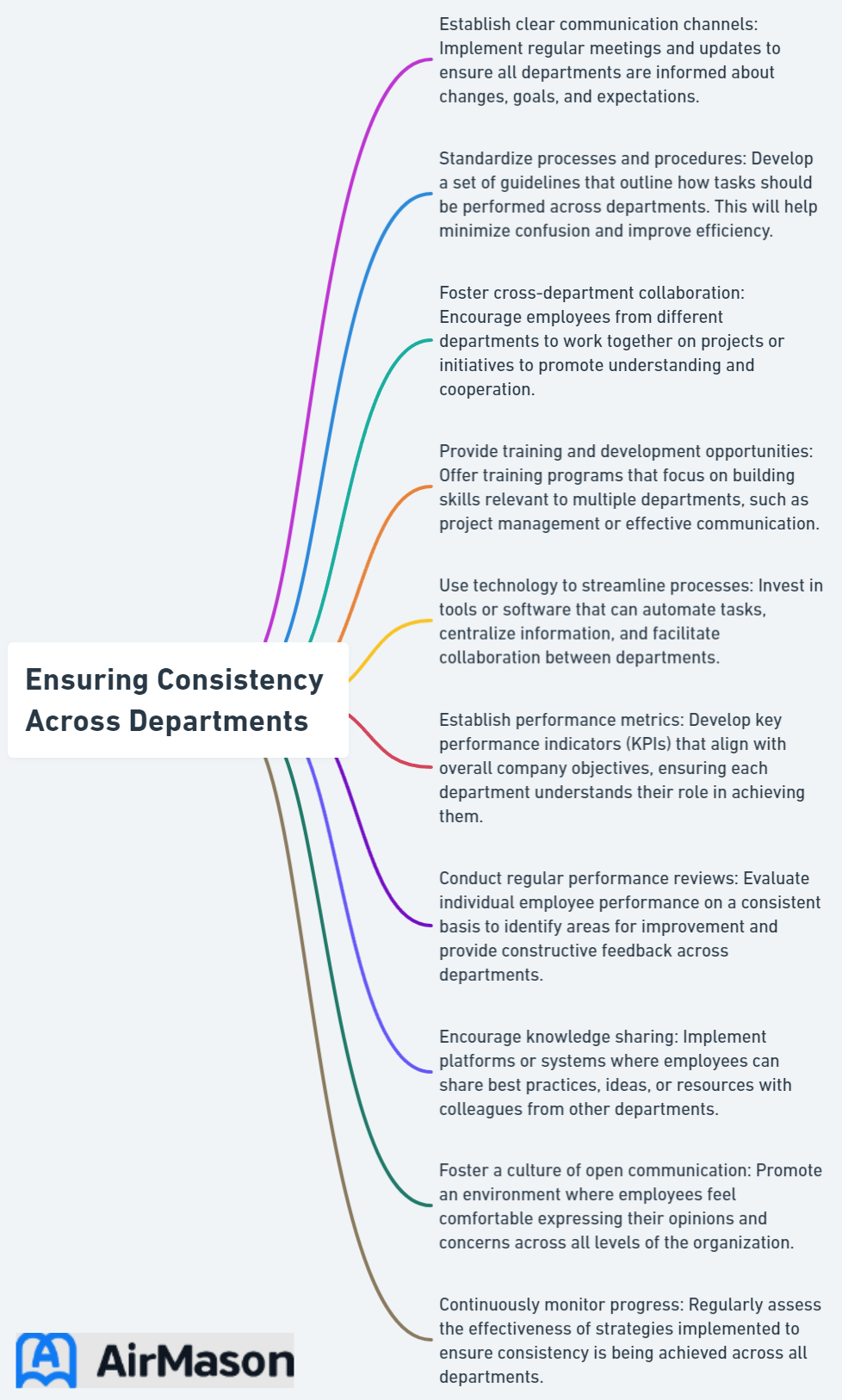
In today’s fast-paced and ever-evolving business landscape, organizations must be equipped with tools and resources that not only streamline operations but also foster a positive and inclusive work environment. One such crucial resource is the employee handbook – a comprehensive document that serves as a guide for both employers and employees to navigate the complexities of the workplace. Are you ready to discover why are employee handbooks important and the essential benefits they provide? Let’s dive in!
Key Takeaways
- Employee handbooks create a unified company culture, set clear expectations and guidelines, provide legal protection for employers and streamline the onboarding process.
- Establishing uniform policies across departments ensures consistency in the workplace while guiding management decisions.
- Training & communication are essential to ensure all personnel understand their obligations & foster trust.
Create Employee Handbook
When embarking on the journey to create employee handbook, careful consideration of your company’s values, policies, and culture is paramount. Crafting a comprehensive guide involves articulating clear expectations, outlining company policies, and fostering a sense of belonging for your team. Begin the process of creating an employee handbook by identifying key policies related to employee conduct, benefits, and workplace protocols. Tailor the content to reflect the unique identity of your organization, ensuring that it serves as a valuable resource for both new hires and existing staff. By thoughtfully addressing the nuances of your company’s work environment, the “create employee handbook” becomes a powerful tool for communication and alignment within your workforce.
Creating a Unified Company Culture
A strong employee handbook plays a pivotal role in shaping and communicating a company’s culture, mission, vision, and values. Employee handbooks, which detail company policies and behavioral expectations, facilitate understanding among staff members and managers regarding workplace conduct standards and benefits. A well-crafted employee manual not only fosters a unified and positive work environment but also contributes to a more robust and positive corporate culture through the clear delineation and consistent implementation of policies.
Moreover, incorporating humor and fun facts into an employee handbook can engage readers and foster a sense of connection with their employer, potentially leading to improved job satisfaction. Essentially, a well-structured employee handbook establishes a company’s culture foundation, promoting clarity and unity across departments.

Setting Clear Expectations and Guidelines
An employee handbook serves a vital purpose in formalizing company protocols and providing a written resource for staff to consult, ensuring the company meets its legal obligations. Handbooks, by setting transparent expectations and guidelines, promote respectful and non-discriminatory treatment of all individuals, thereby reducing the risk of employee lawsuits.
Employee handbooks, through their clear delineation and consistent implementation of policies and procedures, can effectively minimize conflicts and promote respect. Having clear policies and equitable implementation fosters:
- Teamwork
- Productivity
- Establishing uniform company-wide expectations
- Minimizing conflicts or perceptions of unfairness
A well-written handbook that sets clear expectations and guidelines, as provided by the department manager, is crucial for maintaining a harmonious workplace.
Legal Protection for Employers
Employee handbooks can provide legal protection for employers by detailing workplace rights, policies, and procedures, thereby minimizing the possibility of litigation and guaranteeing adherence to laws and regulations. They serve as a tool to reduce misunderstandings, which often lead to legal action. An employee handbook can help protect a company from disputes and potential litigation.
Employers must keep abreast of changes in employment-related state and federal laws, including minimum wage increases, paid family leave entitlements, and health insurance requirements, to update their policies as needed. Consulting an employment lawyer can be helpful in this process. Understanding the employment relationship and having a well-structured employee handbook can help ensure that your business adheres to relevant federal, state, and local laws, while recording all potentialities allows employers to protect themselves and their employees.
Streamlining the Onboarding Process
The onboarding process greatly benefits from an employee handbook, which introduces new employees to the company’s:
- culture
- values
- policies
- rules
- procedures
- employee benefits
A well-crafted and arranged company handbook, also known as an employee handbook, offers new employees insight into the company’s culture and values, facilitating their rapid acclimatization to their new work environment.
The onboarding process is expedited significantly by an employee handbook that provides new hires with relevant information about the company’s regulations, protocols, and expectations. It helps reduce uncertainties for new hires by providing clear guidelines and comprehensive information on the company’s policies and practices, ultimately creating a feeling of assurance and aiding new hires in navigating their roles and responsibilities effectively.
Ensuring Consistency Across Departments

Employee handbooks, which define company-wide expectations, policies, and procedures, promote consistency across departments and fairness in the workplace. Having uniform company-wide expectations eliminates ambiguity and disparities when implementing corporate policies. Consistency in policies and procedures contributes to fairness by:
- Fostering mutual respect
- Exemplifying appropriate conduct
- Modifying regulations to ensure fairness
- Communicating effectively
To guarantee uniform application of policies and procedures across all departments, an organization can take measures such as:
- Documenting policies and procedures
- Standardizing policy format and structure
- Establishing a single source of truth
- Communicating and training employees
- Monitoring and enforcing compliance.
Employee Handbook Introduction
When crafting an employee handbook, the employee handbook introduction plays a pivotal role in setting the tone for the entire document. The employee handbook introduction serves as the initial point of contact between the organization and its employees, providing a glimpse into the company’s values, policies, and expectations. This section serves as a roadmap, guiding employees through the essential information they need to navigate their roles successfully. A well-crafted employee handbook introduction not only communicates the company’s culture but also establishes a foundation of clarity and transparency, fostering a positive and informed work environment.
Guiding Management and Leadership Decisions

Employee handbooks provide a defined structure for policy implementation, disciplinary measures, and appraisals, ensuring employees are treated impartially. Employee handbooks direct management and leadership decisions by presenting a clear framework for policy enforcement, disciplinary actions, and performance reviews.
The employee handbook should stipulate that violations may result in disciplinary action, up to and including termination, while also ensuring fairness to employees by taking into account similar situations and past practices. Providing employees with multiple avenues of contact and including contact information in employee handbooks enables them to direct their inquiries and concerns effectively.
Promoting Employee Satisfaction and Retention
Employee satisfaction, trust, and engagement are promoted by employee handbooks that establish guidelines, clarify job roles, and outline rewards. Clear communication of job roles and expectations in an employee handbook has a positive effect on employee satisfaction and retention, as it assists employees in comprehending their duties, objectives, and how their work contributes to the overall success of the organization.
Reducing ambiguity and misunderstandings through clear communication in employee handbooks leads to:
- Improved job performance and engagement
- Fostering a sense of support and value among employees
- Boosting their satisfaction and likelihood of remaining with the company
Developing and Maintaining an Effective Employee Handbook
The development and maintenance of an effective employee handbook require the following steps:
- Collect relevant information.
- Structure content for ease of access.
- Regularly update the handbook to reflect changes in laws, regulations, and company policies.
Employers should also be cognizant of any regional or state regulations that may influence the policies when collecting data for an employee handbook, including understanding how many employees are affected by these regulations.
Organizing content into distinct sections with clear headings enables employees to easily locate the information they need. Periodically reviewing and revising an employee handbook guarantees that all protocols are in accordance with current legislation and rules, ensuring compliance and avoiding potential legal issues. It is essential to update the employee handbook regularly to maintain its effectiveness.
Training and Communication: The Key to a Successful Employee Handbook
Ensuring adherence to company regulations and protocols necessitates instruction for employees on the material contained in the employee handbook. Effective methods to educate employees on the contents of an employee handbook include:
- Providing training sessions or workshops
- Utilizing visual aids and examples
- Employing eLearning platforms
- Carrying out performance reviews or assessments
- Offering ongoing support
It is imperative to inform employees about all applicable policies in order to guarantee that all personnel within the organization are aware of their obligations. Encouraging open communication about policies and procedures ensures compliance, fosters trust, and improves overall workplace performance.
Summary
In conclusion, employee handbooks are indispensable tools for organizations seeking to foster a unified company culture, set clear expectations and guidelines, provide legal protection, streamline the onboarding process, ensure consistency across departments, guide management decisions, and promote employee satisfaction and retention. Developing and maintaining an effective employee handbook, coupled with proper training and open communication, is the key to a successful and thriving work environment. So, invest the time and effort to craft a comprehensive and accessible handbook – your organization’s future success depends on it!
Employee Handbook for Non-Profit
Crafting an effective employee handbook for non profit organization is crucial for establishing clear guidelines and expectations. An employee handbook for non-profit entities serves as a comprehensive resource, outlining organizational values, policies, and procedures specific to the unique nature of the non-profit sector. From mission statements to code of conduct, addressing the distinct challenges and goals of a non-profit in the handbook fosters a harmonious work environment. Providing insights into the organization’s mission and how each employee contributes to its success, the handbook becomes a valuable tool for both orientation and ongoing reference.
Frequently Asked Questions
What is the benefits section of the employee handbook?
The benefits section of the employee handbook outlines company policies and expectations, provides helpful information about company culture, and details practical information such as dress code, PTO policy, parking guidelines, and reimbursement processes. It can also list available small business employee benefits like health care, retirement funds, and disability insurance.
Is it bad not to have an employee handbook?
It is not legally required to have an employee handbook, however, it is considered best practice and provides employees with important information. Therefore, it is beneficial to create an employee handbook for both employers and employees.
What are the benefits of a great employee handbook?
An employee handbook is essential for any business, as it helps to protect against legal issues, provides guidance to employees, and communicates expectations related to company values, policies, procedures, and benefits. It also serves as an onboarding tool, helping new hires understand the company mission and values.
What is the primary purpose of an employee handbook?
The primary purpose of an employee handbook is to inform employers and employees of a company’s culture, mission, vision, values, policies, procedures, and expectations.
How can employee handbooks help streamline the onboarding process?
Employee handbooks provide new employees with vital information about the company, enabling them to quickly acclimate and streamline the onboarding process.